

Palmyra
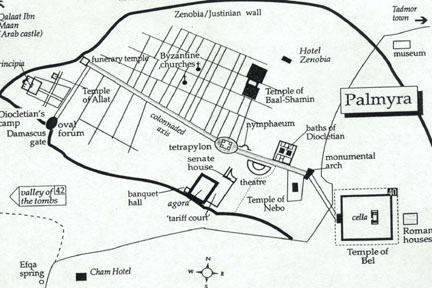
map of ancient city
Palmyra, ancient city of Syria, in an oasis on the northern edge of the Syrian Desert, about 240 km (about 150 mi) northeast of Damascus. According to tradition, it was founded by Solomon, king of Israel. In the Bible it is called Tadmur (see 1 Kings 9:18). A prosperous caravan station in the 1st century BC, Palmyra became a Roman outpost and a major city-state within the Roman Empire in the 1st century AD. Palmyra reached its apogee under Odenathus. A Roman ally, Odenathus regained Roman possessions lost to Shapur I (reigned 241-72) of Persia. Upon the assassination of Odenathus his widow, Zenobia, succeeded him. Her ambition to further expand Palmyra's influence in Asia Minor and Egypt was ended by the Roman emperor Aurelian, who in 272 captured her and razed the city. Subsequently, Palmyra was taken by the Arabs and sacked by Tamerlane.
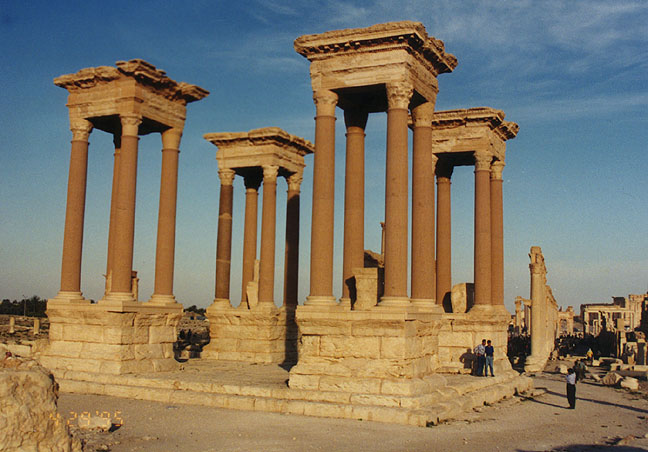
the Tetrapylon
The temple of the Sun (or Baal) and the colonnade, nearly 1.6 km (1 mi) long, originally of some 1500 Corinthian columns, still stand. In modern times, a town, Tadmur, has been built nearby.
Text from Microsoft Encarta
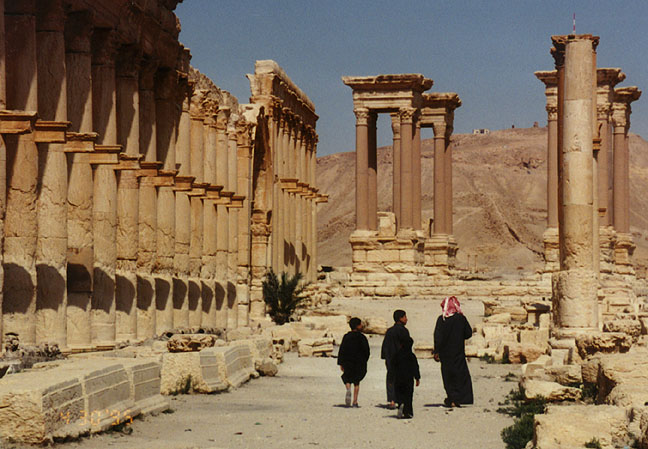
ancient Palmyra in early morning light
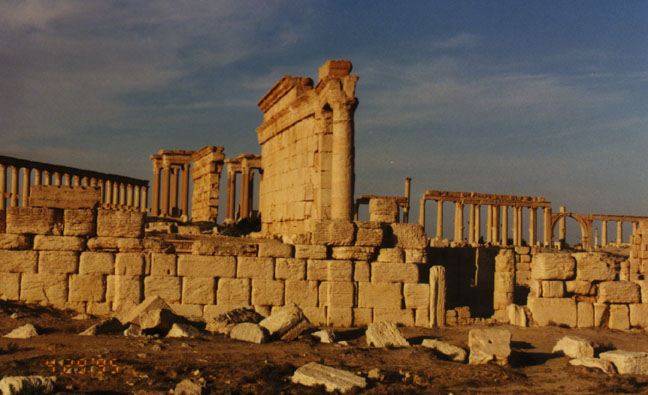

Apulo Temple
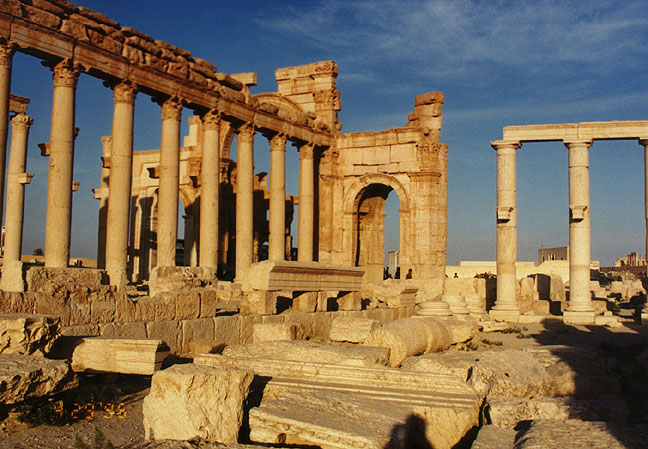

row of columns
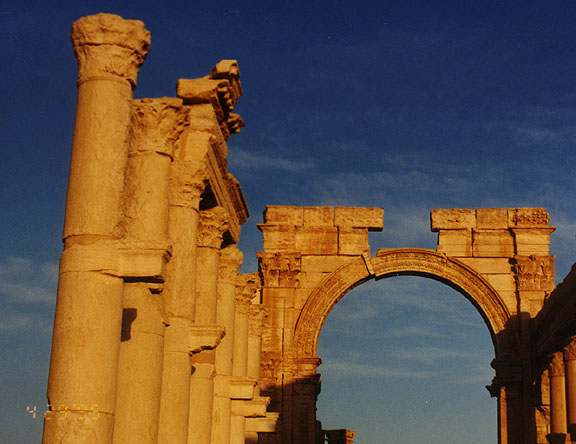
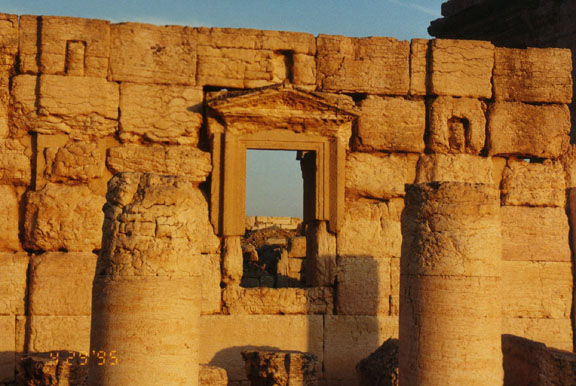
a wall
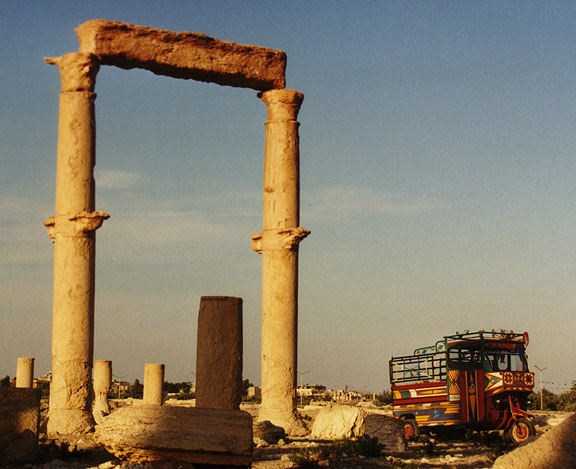
column and local transport

Temple of Bel
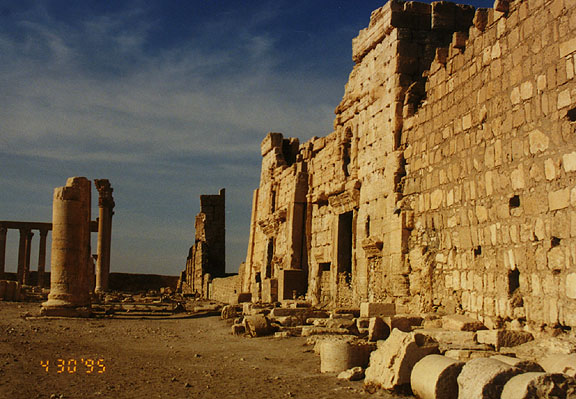
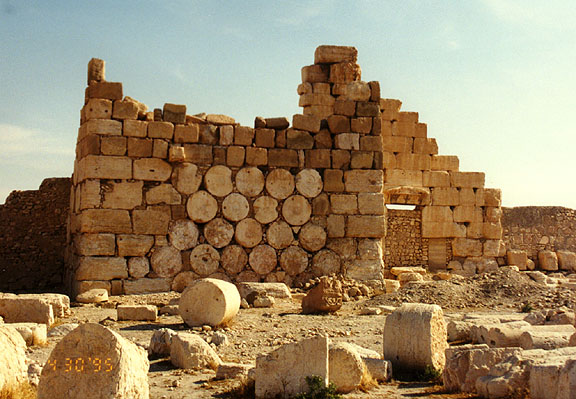
wall constructed of column elements
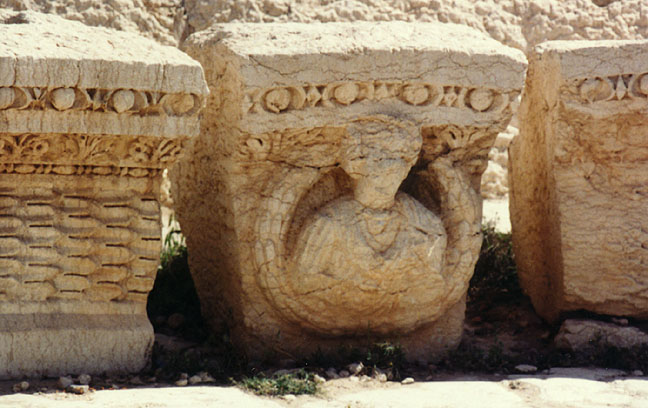
capital blocks
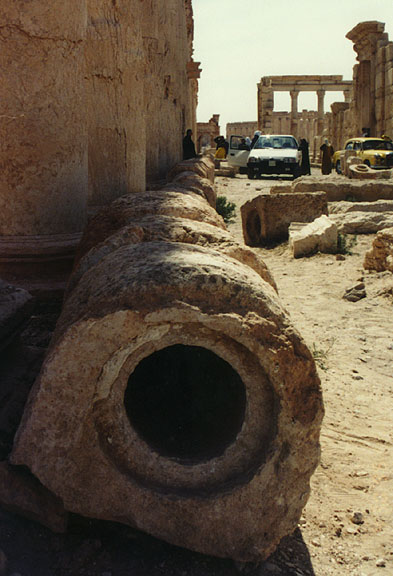
drainage pipes from Roman times

amphitheater
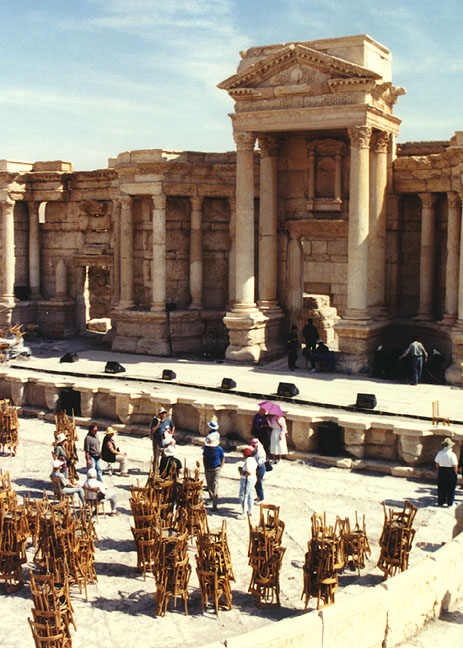
stage of the amphitheater
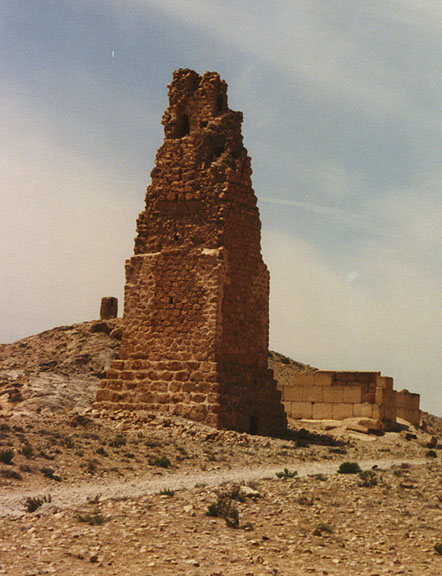
tomb on the nearby hillside
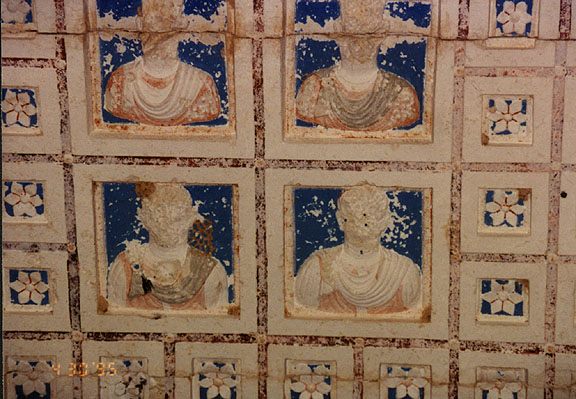
inside of a Roman tomb
![]()
![]()